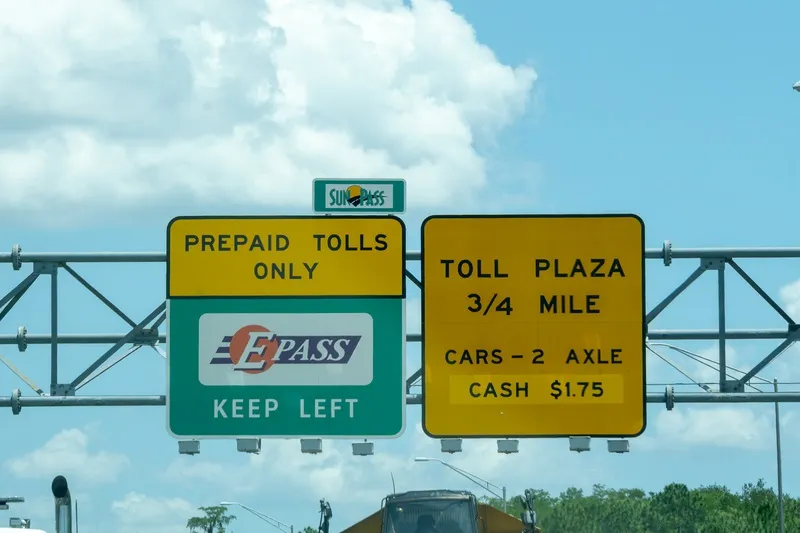Within a broader review of US transport infrastructure securities, including ports and airlines, Fitch Rating analysts say the recent slow growth in aggregate traffic is likely to continue but that many established toll roads look financially solid because of their pricing power - tolls that have been well below revenue maximising levels.
Their pricing power has been somewhat reduced, Fitch says, by strong increases in toll rates on many toll roads, which mean they have less scope for big increases in to
December 18, 2013
Read time: 3 mins
Within a broader review of US transport infrastructure securities, including ports and airlines, Fitch Rating analysts say the recent slow growth in aggregate traffic is likely to continue but that many established toll roads look financially solid because of their pricing power - tolls that have been well below revenue maximising levels.
Their pricing power has been somewhat reduced, Fitch says, by strong increases in toll rates on many toll roads, which mean they have less scope for big increases in toll rates in the future. They are getting closer to the point where higher rates see major drop-offs in traffic (greater elasticity.)
Newer standalone projects face greater risks, Fitch argues, due to deeper debt and great uncertainties about the quality of traffic forecasts.
Urban expressways show the most promise on average they say having shown annual traffic growth 2008-2013 of about two per cent per year and revenues of nearly eight per cent. Turnpikes have seen slight reduction in traffic but approx seven per cent higher revenue through aggressive toll rate increases. Toll bridges have followed a similar pattern with slight traffic decline and four per cent plus annual growth in revenue.
Standalone roads have done worst with two per cent annual traffic decline and less than four per cent increase in revenue.
Fitch expects certain trends that have developed over the last two years to continue for the next two years. Firstly, given the federal deficit and lack of central funding for the road network, increased use of tolling on roadways is likely. In the near term, most new capacity is likely to be tolled. In particular, the rapid proliferation of managed lanes projects across the country is expected to continue in states such as Texas, Florida, North Carolina and Colorado. Longer term, pressure to put in place tolls on currently free-to-use roadways is expected to build, especially if the inertia at the federal level, with respect to developing a long-term highway funding strategy prevails.
Without any coherent funding policies for free roads or transit some state and local toll properties are being used as “cash cows” to cover deficits in un-priced or loss-making transport, Fitch notes.
Issue of new debt supported by toll revenues for cash cow purposes “can leave the toll road with less financial flexibility to make capital investments in its own infrastructure.”
Their pricing power has been somewhat reduced, Fitch says, by strong increases in toll rates on many toll roads, which mean they have less scope for big increases in toll rates in the future. They are getting closer to the point where higher rates see major drop-offs in traffic (greater elasticity.)
Newer standalone projects face greater risks, Fitch argues, due to deeper debt and great uncertainties about the quality of traffic forecasts.
Urban expressways show the most promise on average they say having shown annual traffic growth 2008-2013 of about two per cent per year and revenues of nearly eight per cent. Turnpikes have seen slight reduction in traffic but approx seven per cent higher revenue through aggressive toll rate increases. Toll bridges have followed a similar pattern with slight traffic decline and four per cent plus annual growth in revenue.
Standalone roads have done worst with two per cent annual traffic decline and less than four per cent increase in revenue.
Fitch expects certain trends that have developed over the last two years to continue for the next two years. Firstly, given the federal deficit and lack of central funding for the road network, increased use of tolling on roadways is likely. In the near term, most new capacity is likely to be tolled. In particular, the rapid proliferation of managed lanes projects across the country is expected to continue in states such as Texas, Florida, North Carolina and Colorado. Longer term, pressure to put in place tolls on currently free-to-use roadways is expected to build, especially if the inertia at the federal level, with respect to developing a long-term highway funding strategy prevails.
Without any coherent funding policies for free roads or transit some state and local toll properties are being used as “cash cows” to cover deficits in un-priced or loss-making transport, Fitch notes.
Issue of new debt supported by toll revenues for cash cow purposes “can leave the toll road with less financial flexibility to make capital investments in its own infrastructure.”









